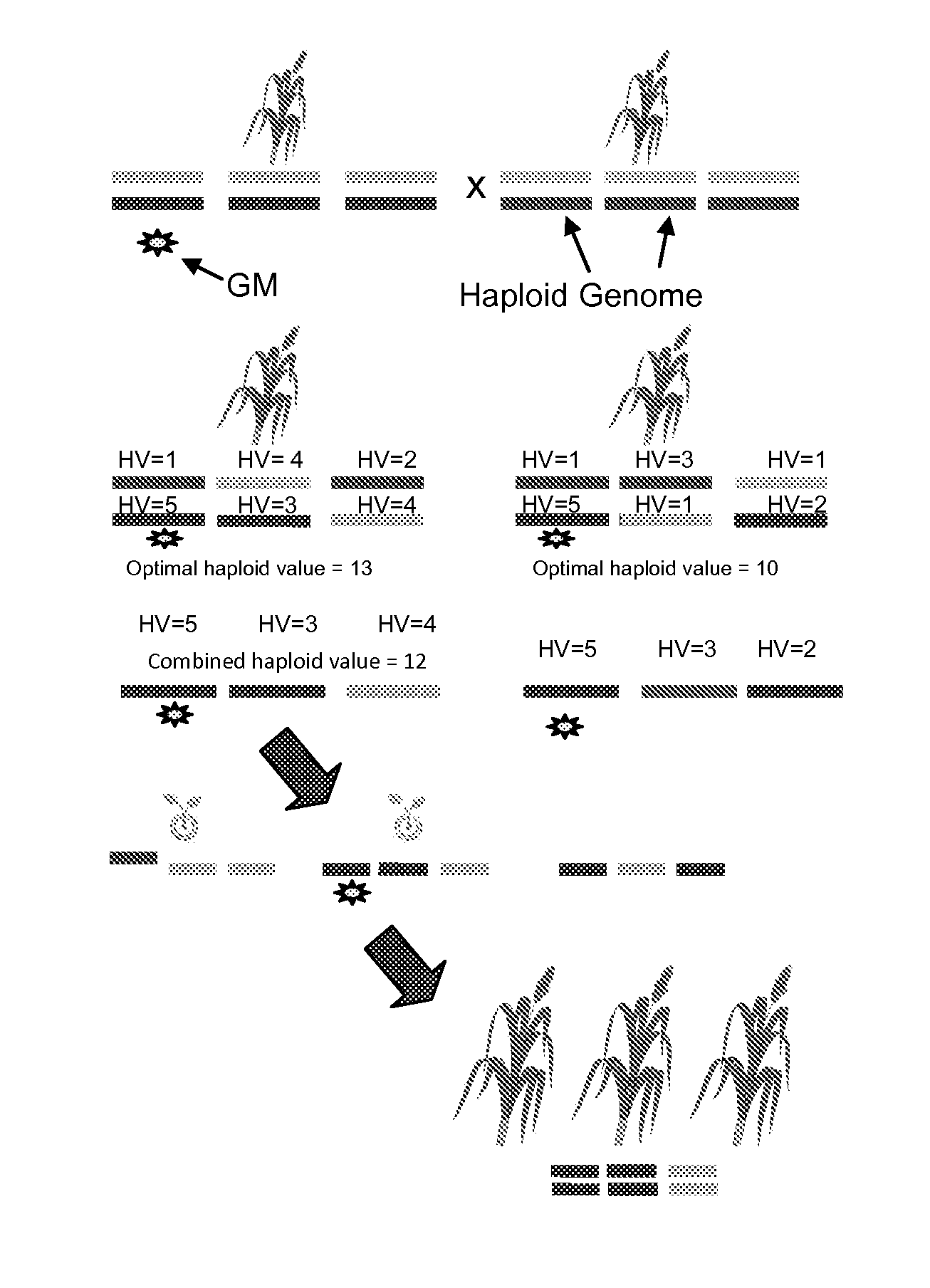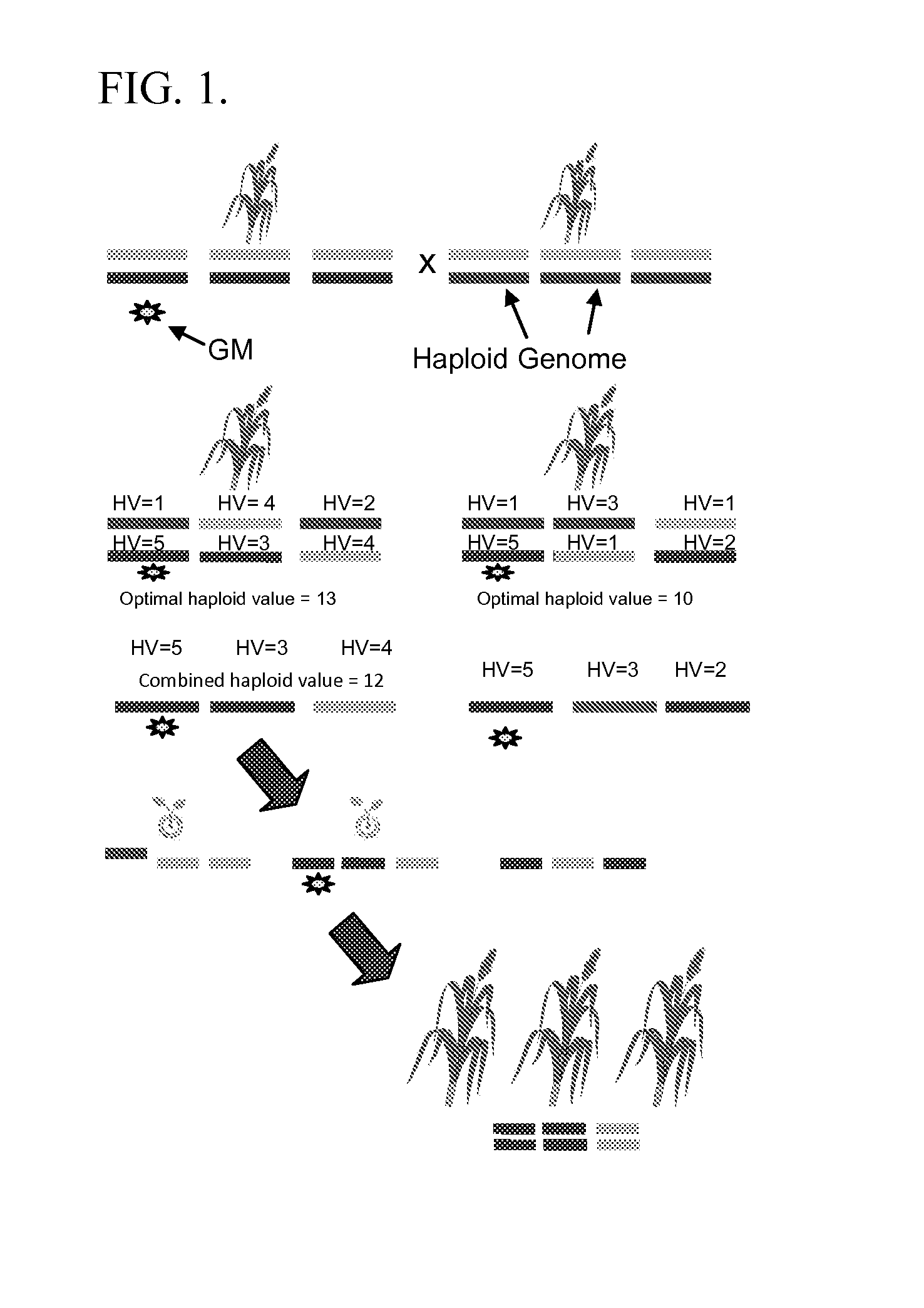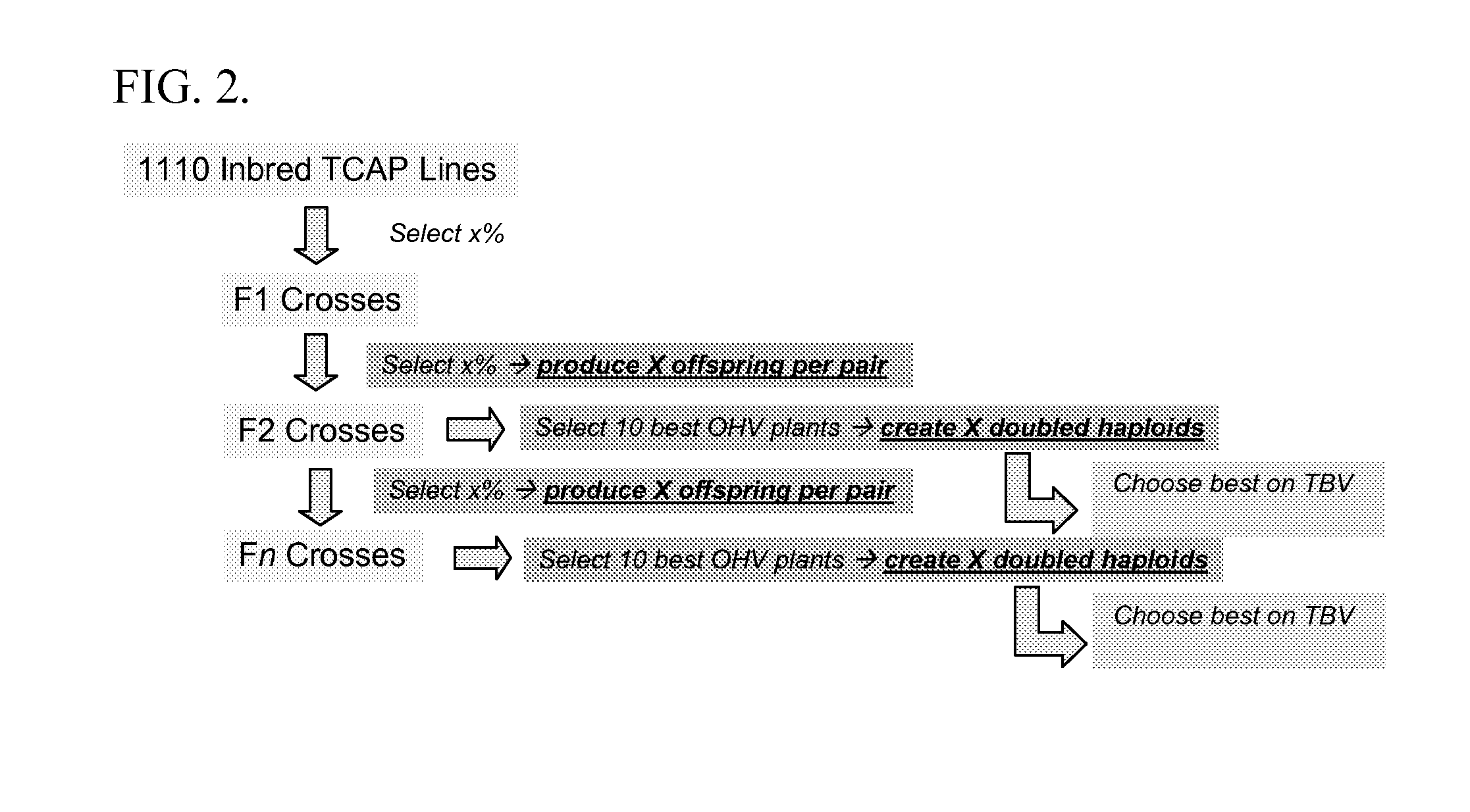Selection based on optimal haploid value to create elite lines
a haploid value and optimal selection technology, applied in the field of plant molecular genetics and breeding, can solve the problems of gs from a sparse marker map in an outbreeding species, gebv from reaching the calculated selection limit, time-consuming and expensive process, etc., to increase the genetic gain, increase the genetic diversity, and increase the genetic gain
- Summary
- Abstract
- Description
- Claims
- Application Information
AI Technical Summary
Benefits of technology
Problems solved by technology
Method used
Image
Examples
example 1
Comparison of GS and OHV Breeding Programs
[0164]Plant breeding programs utilizing OHV selection were directly compared to programs utilizing GS. The comparison was performed with a base population of empirically determined genotypes for 4,788 SNPs from 1110 wheat lines (empirical Illumina iSELECT™ Bead Chip 9K array genotypes (Cavanagh et al. (2013), supra), which ensured a realistic linkage disequilibrium structure.
[0165]These SNPs were placed on 21 chromosomes, each measuring 150 Morgans (3 genomes and 7 chromosomes each). The genome was then divided into segments of equal lengths of 50 cM, which resulted in approximately 3 segments per chromosome.
[0166]During the creation of gametes, either for conventional offspring, or during doubled haploid production, recombinations were randomly placed on the genome at a rate of 1 per Morgan. Allele substitution effects were sampled from a double exponential distribution for 500 loci, reflecting a quantitative trait that is influenced by man...
example 2
Increased Genetic Gain and Genetic Variation with OHV Selection
[0170]Certain points in the breeding cycle that have been determined to be important when trying to increase genetic gain are shown in FIG. 2. Relevant considerations include the number of offspring per pair of outbred plants, and the number of doubled haploids produced per elite plant. Several variations of these factors were tested. The number of offspring per pair was varied between 5, 20, 100, 200, and 1000. The number of doubled haploids produced was varied between 200, 500, and 1000. 100 replicates were run for each variation, and within each replicate the marker effects and base population were identical for GS and OHV selection. All scenario groups and levels within are listed in Table 2. Each scenario was replicated 100 times, and standard errors (SE) are given in Tables and Figures. The results on genetic gain focus on the difference between OHV and GS in genetic standard deviations (SD) of the base generation ...
example 3
OHV Selection During Introgression
[0187]A breeding program combining OHV and introgression was performed in silico using an elite wheat line that includes five events (i.e., a highly transformable line with five EXZACT™ genome modifications), which was crossed with the same elite wheat base population described in Example 1 to simultaneously introgress the five event loci. For the next 5 generations (approximately the time taken to recover the original background after an introgression), the plants with the highest OHV that also carry at least one introgression allele at each introgression locus were selected for doubled haploid production. When 100 doubled haploids were produced, most of the selected haploid lines produced several doubled haploids fixed at all introgressions.
[0188]FIG. 6 shows the difference between traditional introgression (GS) and introgression combined with OHV selection (mean of 100 replicates). While the genetic value using traditional introgression remained ...
PUM
| Property | Measurement | Unit |
|---|---|---|
| disease resistance | aaaaa | aaaaa |
| weight wn | aaaaa | aaaaa |
| weights | aaaaa | aaaaa |
Abstract
Description
Claims
Application Information
 Login to View More
Login to View More - R&D
- Intellectual Property
- Life Sciences
- Materials
- Tech Scout
- Unparalleled Data Quality
- Higher Quality Content
- 60% Fewer Hallucinations
Browse by: Latest US Patents, China's latest patents, Technical Efficacy Thesaurus, Application Domain, Technology Topic, Popular Technical Reports.
© 2025 PatSnap. All rights reserved.Legal|Privacy policy|Modern Slavery Act Transparency Statement|Sitemap|About US| Contact US: help@patsnap.com



